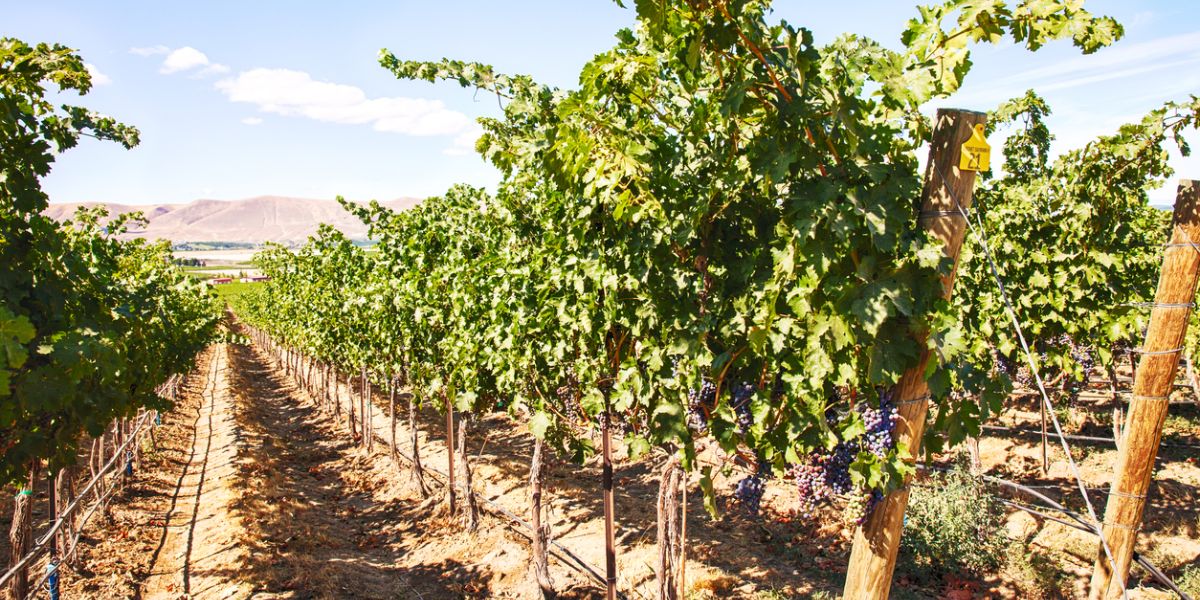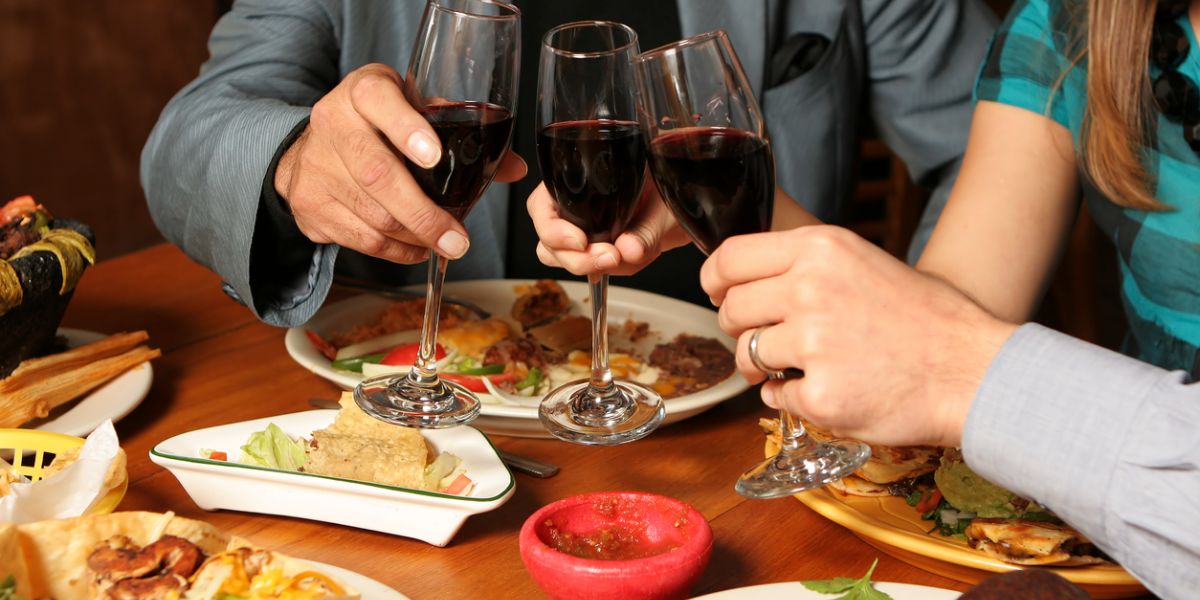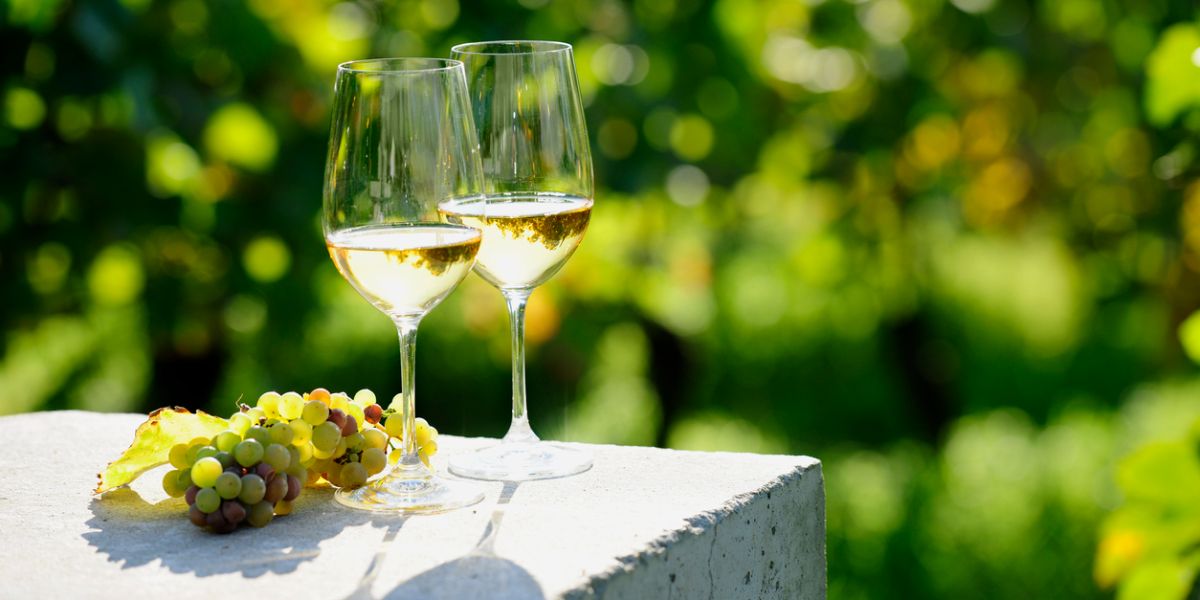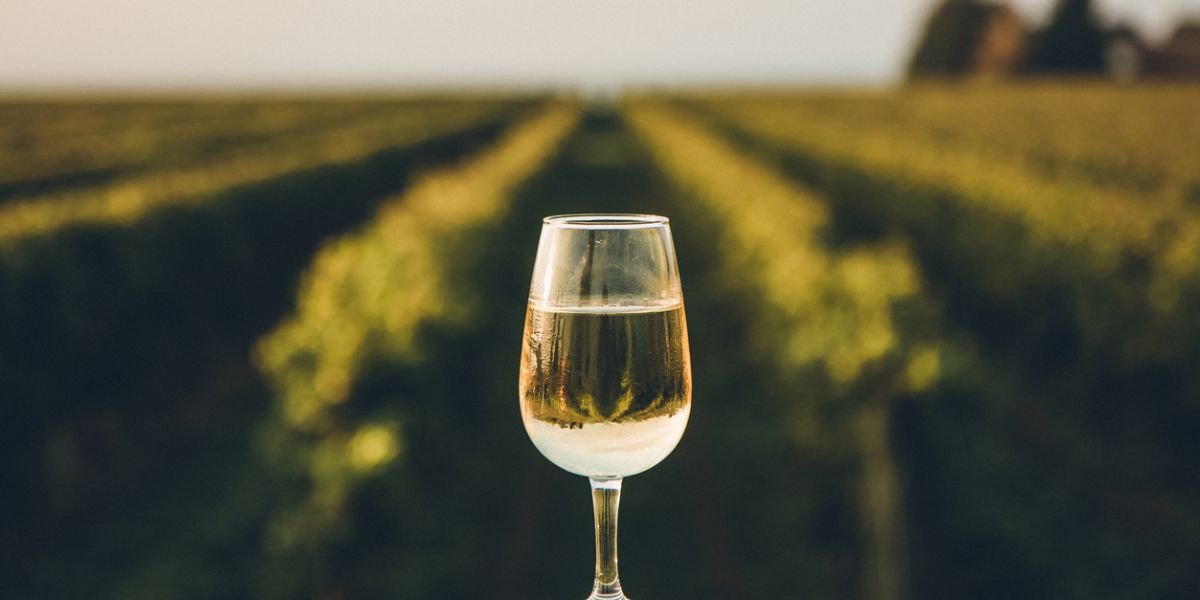Is Washington the Most Underrated Wine Region in the World?
In a word, yes. When it comes to wine production, most people would agree that California stands hands and shoulders above the rest of the nation. But ask people which is the second most popular region for making wine in the USA and most people will not know the answer. In fact, it is a close northern neighbor of California. The State of Washington has established itself nicely as the second wine producer in the country.

Unlike California, the wine industry in Washington got off to a very slow start. In just the last decade, however, the number of wineries in Washington has skyrocketed. Every year, the wine industry in Washington attracts millions of visitors, both local and from out of state. This has led to a flourishing multimillion-dollar wine tourism industry, which has enormous growth potential.
The History
The first wine grapes in Washington were grown in 1825 and, within the next 90 years, wine grape growing was well established by the early Italian, French, and German settlers. The settlers were quick to note the rich, warm volcanic soil and desert-like climate. Along with the annual runoff from the melting snowcaps of the Cascades, a well-known mountain range, it made for an ideal location to grow grapes.
Soon the land acreage for farming grapes increased, and, by 1960, local commercial winemaking had started. Within the next 20 years, local Washington residents started to grow grapes and developed their own home wineries. By the 1980s, the wine tourism industry in Washington had evolved and, within a decade, it was competing with Oregon and California for tourists.
Today, there are hundreds of wineries in eastern Washington, north of the Cascades. While driving, one can easily visualize the dozens of wineries that dot the landscape from western Washington to Vancouver, WA.
Geography
One of the key reasons Washington has seen rapid growth of the wine industry is its geographical location. The state is located on roughly the same latitude (46*N) as some of the top French wine-growing regions of Burgundy and Bordeaux.
The dry climate of inner eastern Washington, combined with the long daylight hours at this northern latitude, creates the ideal conditions for growing grapes. Irrigation techniques learned from the French and California growers have enabled the Washington farmers to grow grapes easily, giving rise to wines with a range of fruity flavors, mild acidity, and pleasant aroma.
Much of the grape growing is done in eastern Washington. On the eastern side of the Cascades, the local government endorsed the wine regions, and farmers are provided with much-needed financial assistance. After California, Washington wine regions produce more wine grapes than all other states in the nation.
Unfortunately, unlike California, Washington wineries still lag when it comes to the export of wine. Much of the wine produced in Washington is locally sold and consumed. Very little Washington wine is exported out of state. Until the industry gets more well known, it will have to play second fiddle to California when it comes to wine exports.
The Best Washington Cabernet
What is the best Washington Cabernet? Why not try the 2018 Silver Totem Cabernet Sauvignon? With blackberry notes and aged in oak barrels for 16 months, this full-bodied red wine is extraordinary. Half of the grapes are aged in oak barrels, and the other half is aged in tanks for around two years. The care that the fermenting process takes is the key to the success of this wine.
Wine Regions of Washington
Horse Heaven Hills AVA has the responsibility of producing almost 25% of grape production in the state. Other Washington wine regions include Columbia Valley AVA, Puget Sound AVA, Red Mountain AVA, Lewis-Clark Valley, and Ancient Lakes of the Columbia Valley, where there are approximately 36 lakes in the region.
Tourism
California leads the nation with over 4,500 wineries. Washington now has 1,000 wineries (compared to only 20 in 1980). With a far more open landscape and less expensive to visit than California, it is anticipated that the wine tourism industry is going to blossom.
While much of the tourism is interstate, it is slowly attracting out-of-state tourists. Membership to the Washington wineries is much cheaper than what it costs in California. You must try the best Washington Cabernet from Pacific Rim and Company.
The Washington wine region’s industry adds close to $7 billion to the state‘s economy each year. Despite a large number of wineries, Washington is still behind California when it comes to actual wine production. The Golden State makes up close to 86% of the total U.S. wine, whereas Washington only accounts for 5%.
But most experts believe that Washington has a lot of room to grow; the climate is perfect, the labor is cheaper than in California, and more young people are interested in the wine-making business. The State of Washington’s best-kept secret may soon be out of the bad. To learn more about some of the wines produced in Washington soils, visit Pacific Rim and Company.
7 Surprising & Unusual Food & Wine Pairings
There is a myth of gigantic proportions circulating in the world of wine drinkers that only certain foods can be consumed with wine. Where and when this belief started is hard to know, and for the longest time, wine drinkers only consumed their favorite beverage with certain foods. There is always food that goes with wine and wine that goes with the food. Most wine drinkers only paired foods that wine experts recommended for fear of feeling embarrassed or being ridiculed.

But experts in the wine industry all agree that this is a foolish belief; you can enjoy your wine with any food that you like. No rule steadfastly says that wines can only be enjoyed with a lamb steak or certain cheese and crackers. Over the past few years, wine connoisseurs have tried various combinations of food pairings with wine, and here are some weird pairings that might not end up being so weird after all.
1. Burgers and Red Wines:
Whether you are eating a veggie burger, chicken burger, or lamb burger, you may want to consume some red wine at the same time. If the burger is spicy and flavorful, try a light-bodied red wine, like Gamay, Negroamaro, Lambrusco, or Pinot Noir. Still, if it is the classic cheeseburger, then a blend of Syrah, Zinfandel, and Petite Sirah may enhance the palate.
2. Macaroni and Cheese:
Most people would never dream of consuming wine with Mac & cheese. But with the right sparkling wine, the dish will taste absolutely great in your mouth. Some great sparkling wines that go with this all-American dish include Brut, Moscato, Chardonnay, and Ayala Brut. The creaminess and salt pair excellent with sparkling wines.
3. Chocolate Ice Cream:
If you have been waiting to indulge in chocolate ice cream, then try pairing it with a light red wine like Pinot noir. Each scoop of chocolate ice cream with a sip of the Pinot Noir will be a delightful experience. The rich milk chocolate flavor, plus the soft fruit aroma of the wine, make a great combination.
4. Pizza and Red Wines:
Regardless of the topping, experts agree that pizza plus red wine is a great pairing. Some of the red wines that can handle a mega-dose of pepperoni and mushrooms include Zinfandel, Shiraz, Merlot, or Cabernet Sauvignon. The high tannin content and acidity of the red wine combine well with the meaty and salty taste of the pizza. The key is to select a light-bodied wine so as not to overpower the flavor of the pizza.
5. Sausage or Bacon and Most Wines:
Both bacon and sausage go great with a sweet wine like Sauvignon Blanc, Chardonnay, Canyon Oaks Zinfandel, Sweet Lucy Red, or Sweet Moscato. The spicy meat taste will blend well with the sweetness of the wine. However, the key is to sip the wine, as it will exude the pepper flavor of the sausage/bacon.
6. Tacos and Wine:
Tacos can be salty, spicy, sweet, and hot, and to calm the palate, the best wines are the fruity, medium-full-bodied red wines, specifically Pinot Noir and Zinfandel. Or, if you prefer white wine, go with a Sauvignon Blanc or Riesling. The aromatic fruits will balance out the spice and the heat. Plus, the mild acidity of a Riesling will help melt the guacamole in your mouth.
7. Hot Dogs and Wine:
A hot dog with relish, a thick layer of mustard, a scoop of spicy baked beans, and jalapenos served on a traditional soft white bun with fried onion toppings are best paired with Alsatian Pinot Blanc, Riesling, or a lighter, fruity red like Pinot Noir. These wines will reduce the spiciness, richness, and smoke, yet also bring out the flavors of the hot dog. If the jalapenos are spicy, then you need to cool the palate down with sparkling wine; choose either a Chardonnay, Chilean Merlot, or a Riesling.
Figure Out the Weird Wine Pairings for Your Next Party Today!
At the end of the day, there is no firm rule on wine pairings and food. It is all based on your personal preference. Try any weird pairings you would like to! Find the food that goes with wine that you like.
The important thing is not to stick to old wine rituals; try a different red or white wine with different types of food. Soon, you will realize that wine and food pairings can also depend on the mood, occasion, setting, and beverage availability. To ensure you don’t run out of wine, visit Pacific Rim and Company, where the selection will give you a variety of wines to try.
The Essential Guide to Riesling Wine
Riesling Wine 101
Riesling wine is readily available in North America, but most consumers know very little about its history. This refreshingly delicate aromatic white wine is native to regions along the Rhine River in Germany. Besides Germany, Riesling is also made in Austria, throughout eastern Europe, South Africa, Australia, France, and the United States.

The wine is highly acidic in nature because it boasts a wide range of fruity flavors like apricots, apples, limes, pears, and peaches. A feature unique to Riesling wine is that it is one of the few wines with an iconic tall and slender bottle shape that makes it easily recognizable on the shelf.
The History of Riesling
Riesling’s history can be traced to the Rhine wine region of Germany, where it was the preferred beverage of German royalty. It was a wine that was commonly consumed during business dealings by the Europeans during the late 18th and 19th centuries. Early on, it was quickly realized that Riesling was one of the few rare wines that aged gracefully and developed a high-quality taste over time.
This is one of the common reasons why the best Riesling wines are often stored for decades and can be found in the basements of many estates. Part of the reason for its high quality is due to the high level of acidity. During the aging process, it is now known that a compound called TDN is secretly giving the wine its hallmark petrol-like aroma.
Riesling Producers
In the Rhine region, the majority of Riesling produced is medium- to full-bodied and more acidic. Besides Germany, Austria and France also produce very high-quality Riesling wines that tend to be light-bodied and sweet or maybe very dry. Outside Europe, Australia is also a major producer of dry Riesling wine, which characteristically has unique citrus flavors.
In North America, Riesling is produced on both the East and West Coasts. On the West Coast, the wine is typically dry and contains mature stony, fruity flavors. A delightfully 2018 Dry Riesling wine, produced in the beautiful Yakima Valley in the State of Washington, is pure and crisp, with jasmine, citrus, and mineral flavors to delight the senses. The soils in the Yakima and Horse Heaven Hills areas of the larger Columbia Valley are ideal for producing complex Riesling wines.
The Taste of Riesling
In its youth, Riesling is most well-known for its fruity flavors. These fruity flavors depend on which part of the world the wine is produced. In Germany and France, it is known to have flavors of apples, apricots, peaches, and pears, but in Australia, the wine is most commonly associated with flowery tastes, including citrus, jasmine, and even stony fruits. In addition, as the wine ages, it will also pick up other flavors like beeswax, honey, ginger, and the distinct petrol aroma.
Is the Wine Sweet?
Most Riesling wines that come from Germany are sweet due to the grapes, but in other parts of the world, the wine may be dry. A bottle of 2019 Sweet Riesling is processed in such a way as to maintain as much fruitiness and freshness as possible, with peach and pineapple flavors.
A 2019 J Riesling, with the “J” and then the capital “R” standing for “Just Right” because that’s what it is – just right. Both dry and sweet Rieslings are so popular, it seemed “Just Right” to craft a wine in between those two. This charming Riesling works well with spicy dishes, while the acidity goes well with German and French foods that are richer and heavier.
A wonderful dessert wine, the 2018 Vin De Glacière Riesling has about 16 percent residual sugar with nuances of jasmine, pear, and honey and a well-preserved natural acidity.
Pairing Riesling with Food
Riesling can be paired with a wide range of foods, but it is ideally best consumed alongside spicy and hot foods, like Thai curries, Indian biryani, or hot Chinese noodles. The high acidity of the wine will tame the hot spices and keep the palate refreshed after every bite. Other foods that pair well with Riesling include Mexican cuisine, roast duck, Cajun cuisine, and most Italian foods.
When Should I Drink Riesling Wine?
The best Riesling wine can be consumed at any time, it is ideal for the summer and warm nights. The reason is that the high acidity and the crisp taste will seduce you into making a spicy barbecue, followed by a cooling sensation after drinking a glass of sparkling Riesling wine. To maintain the freshness, Riesling wines are at their best when refrigerated and served cold.
Conclusion
Good Riesling wines are very affordable at between $10.99 and $16.99 when you purchase them online from Pacific Rim and Company or at a store that carries their products near you. Pacific Rim is passionate about Riesling wines. They care about the land and are responsible stewards in their sustainability practices to keep the State of Washington beautiful.
Whether you choose a dry or sweet Riesling or one that sits in the middle of the road and is “Just Right,” you can’t go wrong with a selection from Pacific Rim and Company. They are very conscientious about using the best sustainable grape-growing techniques for low-input winemaking.
In the vineyards, they conserve water by not overwatering the grapes and also use the natural yeast from the grapes for the fermentation process. Go online today to check out their story and see the vast selection of the best Riesling wines available now for purchase. You can enjoy your favorite Riesling soon!
Is Riesling a Sweet Wine?
Is Riesling a sweet wine? This question often lingers in the minds of wine enthusiasts and newcomers alike, as the world of Riesling wine is known for its intriguing interplay between sweetness and acidity. In this exploration of Riesling's sweetness, we'll delve deep into the spectrum of flavors and sugar levels that define this beloved varietal. From bone-dry expressions to lusciously sweet offerings, Riesling boasts a versatility that caters to a wide range of palates. Join us on a journey through the nuanced sweetness of Riesling, as we unravel the mysteries of this delightful wine.

Is Riesling a Sweet Wine?
Understanding Riesling's Reputation
Riesling wine is often associated with sweetness and for a good reason. It's renowned for its versatility in producing wines that range from bone-dry to lusciously sweet. This diversity is part of what makes Riesling so appealing to wine enthusiasts of all palates.
Riesling Wine Sweet: The Sweetness Spectrum
Riesling wines cover a wide range of sweetness levels, from bone-dry to dessert-sweet. Understanding where a particular Riesling falls on this spectrum is crucial for selecting the one that suits your taste preferences.
Reading the Label
One of the easiest ways to determine the sweetness of a Riesling wine is to read the label. Winemakers often provide information about the wine's sweetness level. Here are some common terms you might encounter:
- Dry: If a Riesling is labeled as "dry," it means it has minimal residual sugar and will taste less sweet.
- Off-Dry: An "off-dry" Riesling has a touch of sweetness but is not overly sweet. It strikes a balance between sweetness and acidity.
- Semi-Sweet: Semi-sweet Rieslings have a noticeable sweetness without being overly sugary. They often have a pleasant fruity taste.
- Sweet: Sweet Rieslings are lush and sweet, with a higher level of residual sugar. These wines are perfect for those who enjoy a dessert-like experience.
Alcohol by Volume (ABV)
Checking the alcohol by volume (ABV) can also give you a clue about a Riesling's sweetness. Generally, lower-ABV wines are sweeter, while higher-ABV wines tend to be drier. Sweet Rieslings typically have ABV levels below 11%.
Acidity and Balance
Another indicator of sweetness is acidity. Wines with higher acidity can balance out sweetness, making them taste less sweet than they are. So, don't rely solely on your taste buds; consider the wine's acidity as well.
Riesling Wine Sweet: A Deeper Dive
Terroir Matters
The sweetness of a Riesling can also be influenced by the region where the grapes are grown. Cooler climates tend to produce Rieslings with higher acidity, which can make them taste less sweet. In contrast, warmer climates often yield Rieslings with riper fruit flavors and more perceived sweetness.
Late Harvest and Noble Rot
Some Rieslings, particularly those labeled as "late harvest" or affected by noble rot (botrytis), can be exceptionally sweet. Late-harvest grapes are left on the vine longer, allowing them to accumulate sugars. Noble rot, on the other hand, concentrates the flavors and sweetness of the grapes.
Wine Descriptors
When reading wine descriptions or tasting notes, keep an eye out for specific terms that suggest sweetness. Words like "honeyed," "apricot," "peach," and "candied" are often associated with sweet Rieslings.
Unlocking the Mystery: Is Riesling a Sweet Wine?
In conclusion, Riesling is a versatile wine that can range from bone-dry to dessert-sweet, making it suitable for a wide range of taste preferences. To determine how sweet a Riesling wine is, look for clues on the label, consider the ABV, and pay attention to the wine's acidity and balance. Remember that the terroir, late harvest, and noble rot can all influence a Riesling's sweetness level.
At Pacific Rim & Co., we offer a selection of Riesling wines that cater to various tastes. Whether you prefer your Riesling dry or sweet, we're here to provide you with high-quality, affordable, and sustainable wines that you'll savor. If you have any questions or need assistance in choosing the perfect Riesling for your palate, don't hesitate to contact us for more information. Cheers to the delightful world of Riesling wines!
What is the healthiest red wine?
Over the past couple of decades, scientific studies have been uncorking exciting news for wine lovers, especially those who favor a glass of red. It turns out that certain types of wine, particularly red wines, aren't just delicious, but they offer some remarkable health perks too.

From the vibrant color of the grapes to the complex bouquet of flavors, red wine's makeup is an intriguing blend of compounds like resveratrol, antioxidants, and polyphenols, all with potential health benefits. There's more to that ruby-red glass of wine than meets the eye, so let's pour ourselves a glass and explore what makes sipping a healthy red wine more than just a pleasure—it can be a toast to good health.
The Allure of Healthy Red Wine
The appeal of healthy red wine lies in its remarkable ability to offer a sensory experience that is as delightful as it is beneficial. People have been captivated by red wine for centuries, drawn to its rich, complex flavors, and the sense of sophistication it adds to a meal or an evening of relaxation. Beyond its taste, red wine offers a unique combination of health benefits, thanks to compounds like resveratrol, antioxidants, and polyphenols.
These elements have been linked to heart health, reduced inflammation, and a lowered risk of chronic diseases. The pleasure of enjoying a glass of red wine is complemented by the knowledge that it can contribute positively to one's overall well-being. It's this harmonious blend of indulgence and health-consciousness that makes red wine a cherished choice for many.
Characteristics of the Healthiest Red Wines
Healthy red wine isn't just a buzzword; it's a genuine consideration for wine lovers who value both taste and well-being. Let's delve into the characteristics that make a red wine "healthy."
Resveratrol Content: Resveratrol, a natural compound found in red grape skins, is often associated with red wine's health benefits. It is known for its potential to improve heart health, reduce oxidative stress, and support longevity.
Moderation is Key: Like most things in life, moderation is crucial. Consuming red wine in moderate quantities is linked to potential health benefits, while excessive consumption can lead to adverse effects.
Low Sulfite Content: Some people are sensitive to sulfites, a common wine preservative. Choose wines with low sulfite content if you have a sensitivity.
Red Wine is Good: Science Says So
Red wines are abundant in polyphenols, organic compounds commonly found in many plant-based foods. Within the body, these polyphenols transform into antioxidants, wielding the ability to counteract free radicals that could potentially harm your cells. Free radicals are often associated with various detrimental conditions, including cancer and heart disease.
Among the multitude of polyphenols, two stand out for their noteworthy health benefits: procyanidins and resveratrol, both present in red wine. Numerous studies have consistently demonstrated the remarkable effects of these polyphenols, which include reducing inflammation, raising levels of good cholesterol, and lowering the levels of bad cholesterol in the body.
Healthy Red Wine Selections
Now that we've outlined what to look for in a healthy red wine, let's explore specific red wine varieties that align with these criteria:
Pinot Noir: Pinot Noir is often praised for its high resveratrol content, making it a popular choice for health-conscious wine enthusiasts. This light to medium-bodied wine offers a delicate and fruity flavor profile.
Merlot: Merlot, another red wine variety, contains moderate levels of resveratrol. Known for its soft and approachable taste, Merlot is a versatile option for those seeking a healthy wine.
Cabernet Sauvignon: Cabernet Sauvignon, with its bold and robust flavor, is rich in resveratrol. This wine variety is celebrated for its potential cardiovascular benefits.
Syrah (Shiraz): Syrah, or Shiraz as it's known in some regions, is a dark and full-bodied wine that also boasts resveratrol content. It pairs well with a variety of foods and offers a unique taste experience.
Sustainable Winemaking at Pacific Rim & Co.
Wine becomes a healthier and more conscientious choice when it hails from sustainable and eco-friendly wineries, like Pacific Rim & Co. Environmentally-conscious practices not only reduce the carbon footprint but also benefit the overall quality of the wine. Sustainable vineyards prioritize soil health, minimize the use of pesticides and chemicals, and embrace organic farming techniques. As a result, the grapes used in these wines tend to be richer in antioxidants and nutrients, enhancing their potential health benefits.
At Pacific Rim & Co., we not only care about your health but also the health of our planet. We are passionate about sustainable and eco-friendly winemaking practices, making sure our wines capture the unique essence of the Pacific Northwest region. From our Pacific Rim brand to other wine offerings, we're committed to creating high-quality wines that align with our eco-conscious values.
Responsible Drinking and Health
It's important to note that while red wine offers potential health benefits, moderation is key. Pacific Rim & Co. encourages responsible drinking and acknowledges that excessive alcohol consumption can have detrimental effects on health. When consumed in moderation, red wine can be a delightful addition to a healthy lifestyle.
Cheers to Good Health!
So, what is the healthiest red wine? The answer lies in wines that offer a balance of resveratrol, low sulfite content, and moderation in consumption. Varieties like Pinot Noir, Merlot, Cabernet Sauvignon, and Syrah are excellent choices for those seeking a healthy red wine that also tantalizes the taste buds.
In your journey to discover the healthiest red wine, we encourage you to explore our selection and find the perfect bottle to complement your well-being. To learn more about our wines, visit our virtual shop. For more information and inquiries, contact us today!
Cheers to your health and enjoyment!